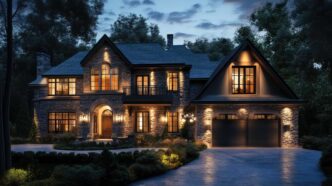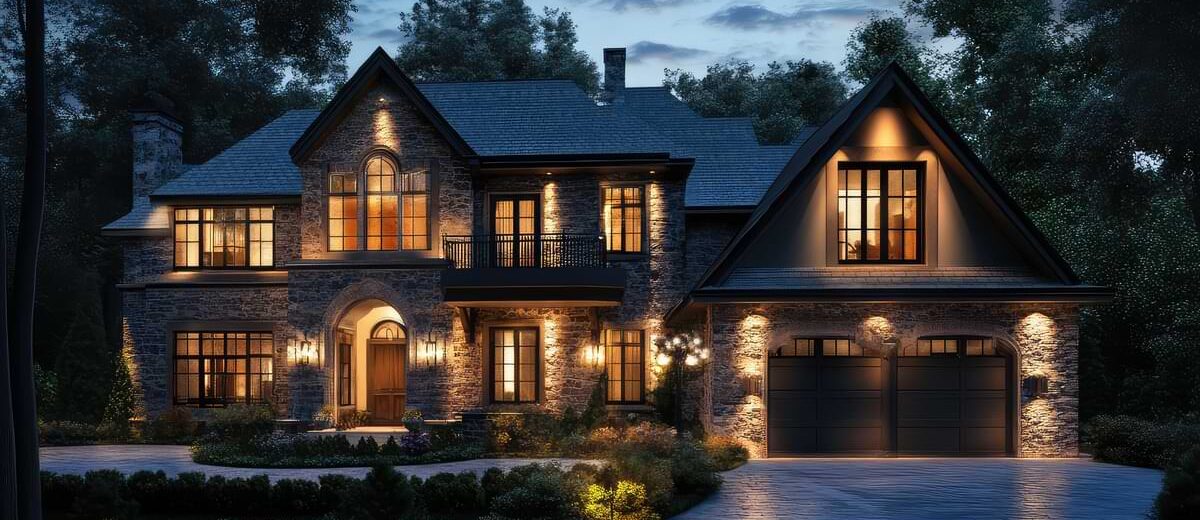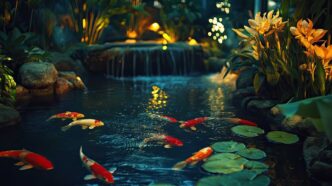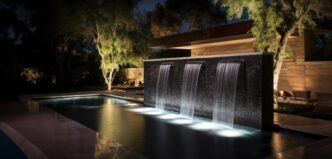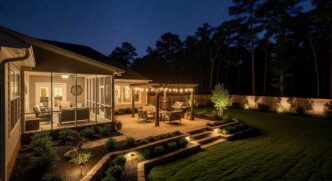Table of Contents: Induction Lighting
- What Is Induction Lighting?
- What Are the Benefits of Induction Lighting?
- What Are the Disadvantages of Induction Lamps?
- Transform Your Landscape with Induction Lighting
- FAQs for Induction Lighting
When it comes to landscape lighting, LEDs tend to steal the spotlight. But there’s another player on the field worth knowing: induction lamps.
While it’s not as flashy or widely used as LED or halogen in residential landscape lighting, induction lighting has some unique benefits that can make it a smart choice for certain outdoor applications. If you’re curious about this technology and how it stacks up in the world of landscape lighting, read on.
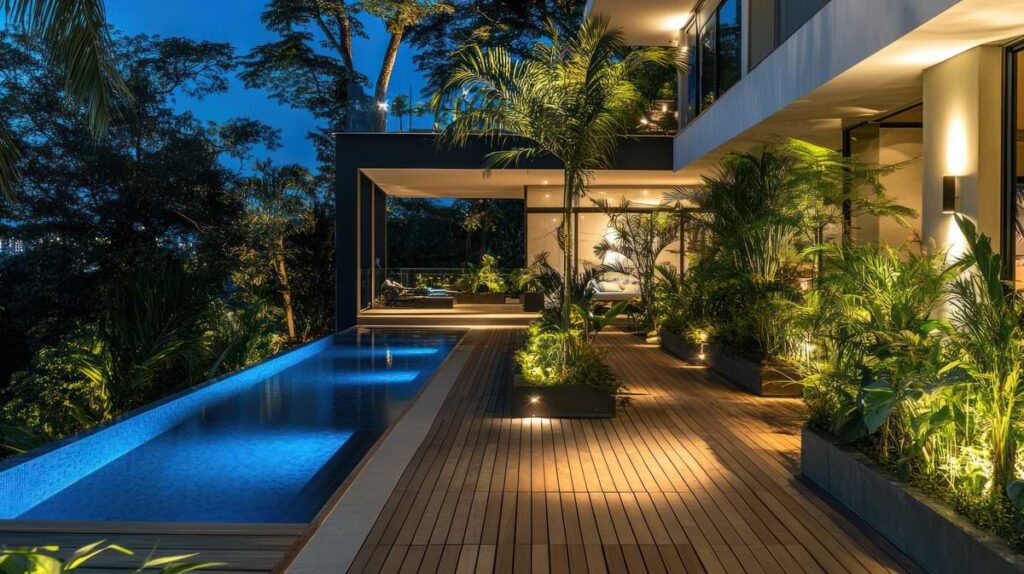
What Is Induction Lighting?
Induction lighting is a type of fluorescent lighting that doesn’t rely on electrodes or filaments to generate light. Instead, it uses electromagnetic fields to excite gas inside the bulb, producing a bright, even glow. Think of it as a cousin to the fluorescent lights you’re used to: only more efficient, more durable, and with far fewer maintenance headaches.
Because there are no filaments to burn out, induction lights are incredibly long-lasting. Some systems are rated for 60,000–100,000 hours of use, which is even more than high-quality LEDs. That means once you install them, you probably won’t be touching them again for a decade or more.
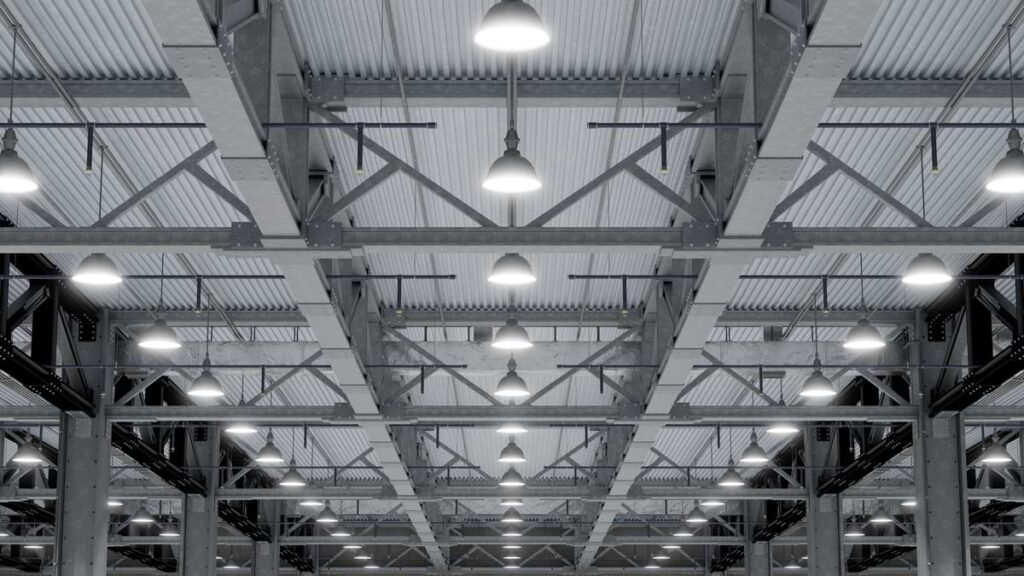
What Are the Benefits of Induction Lighting?
Induction lighting isn’t for everyone, but it shines (literally) in certain applications. If you’re lighting a large commercial property, a public park, or any outdoor area where reliability, longevity, and even light distribution are crucial, induction could be a smart investment.
It’s especially handy in areas with tall poles or wide coverage needs. Some municipalities even use induction fixtures in streetlights, parking lots, and sports courts.
In the context of landscape lighting, induction lamps offer several key advantages:
- Long Lifespan: This is a huge plus for hard-to-reach fixtures like those on tall trees, architectural accents, or commercial pathways where constant maintenance isn’t feasible.
- Excellent Color Rendering: Induction lighting typically offers a CRI (Color Rendering Index) between 80-90, which means it displays colors more naturally and vibrantly than many other lighting types.
- Cold Weather Performance: Unlike traditional fluorescents, induction lights fire up quickly even in cold conditions, making them a good fit for outdoor use year-round.
- Energy Efficiency: While not quite as efficient as LEDs, induction lights are still much more efficient than halogen or incandescent lights.
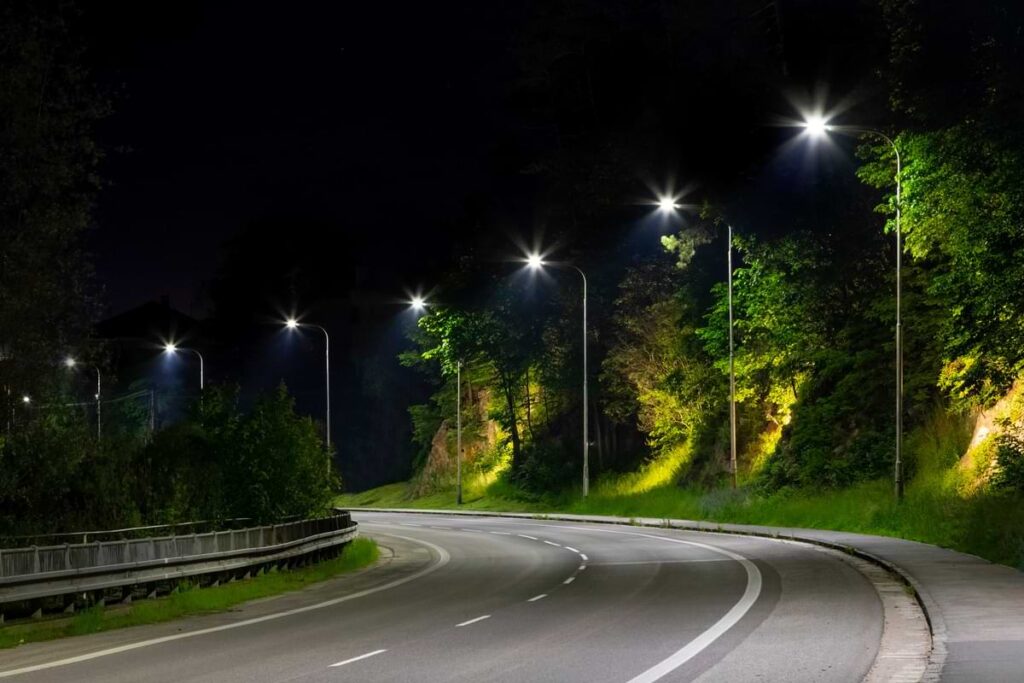
What Are the Disadvantages of Induction Lamps?
While induction lighting offers impressive longevity and efficiency, it’s not without its drawbacks. From higher upfront costs to limited fixture variety, here are a few considerations to keep in mind before committing.
- Initial Cost: Induction lamps can be more expensive up front than LED options.
- Limited Design Options: There’s less variety in fixture styles and bulb types compared to LED systems.
- Lower Availability: Not all landscape lighting retailers stock induction products, and support may be harder to find compared to mainstream lighting systems.
Transform Your Landscape with Induction Lighting
Induction lighting may not be the go-to for every backyard or garden path, but in the right setting, it’s a tough contender. With virtually zero maintenance and solid energy performance, it’s a “set it and forget it” solution for high-traffic or hard-to-access outdoor spaces.
Still deciding? If your priority is flexibility and fixture variety, LED might still be king. But if you want dependable, long-term illumination with minimal upkeep, induction lamps deserve a closer look.
FAQs for Induction Lighting
In lighting, induction refers to a technology that uses electromagnetic fields to generate light without using filaments or electrodes. Instead of electrical contact, it excites gases inside a sealed bulb using magnetic induction. This results in a durable, low-maintenance light source with minimal parts that wear out over time.
Technically, there’s no such thing as an “induction LED” since induction and LED are two separate lighting technologies. However, some people use the term to describe hybrid fixtures or compare the efficiency of induction lighting to LEDs. Both are energy-efficient, but they operate in very different ways.
Induction lights are known for their impressive lifespan. Most are rated to last between 60,000 to 100,000 hours, depending on the quality of the components and how they’re used. That makes them one of the longest-lasting lighting options available, often outliving even high-end LEDs.
Join our Insider list and check out the different lighting options that we have to offer.
